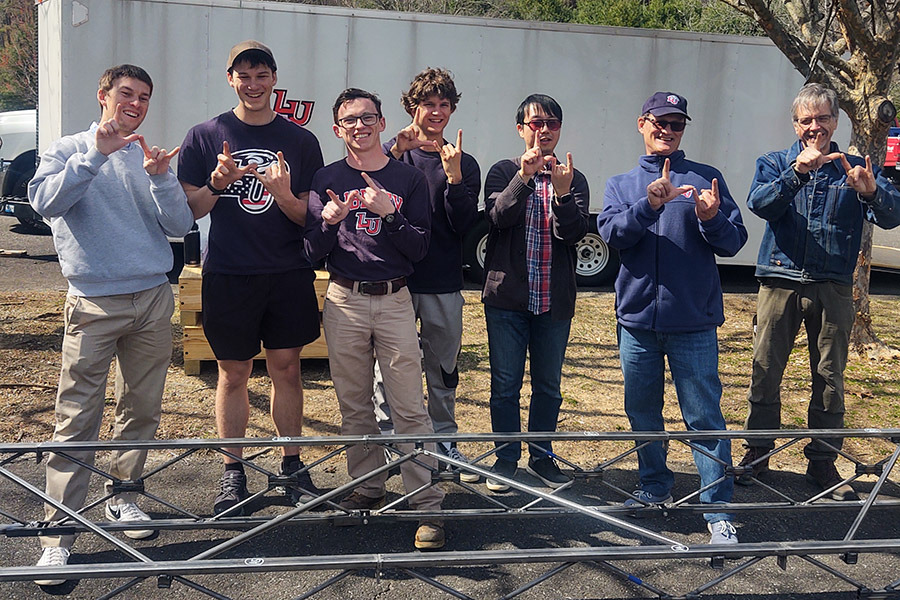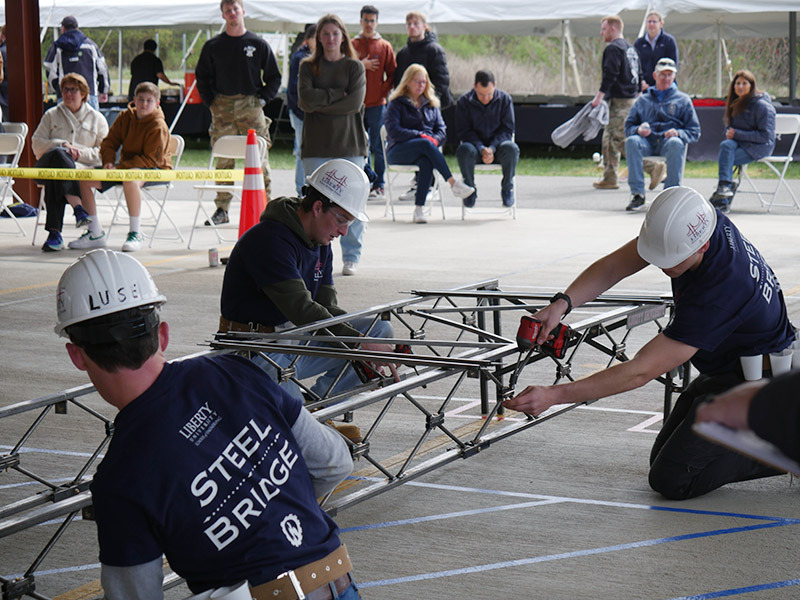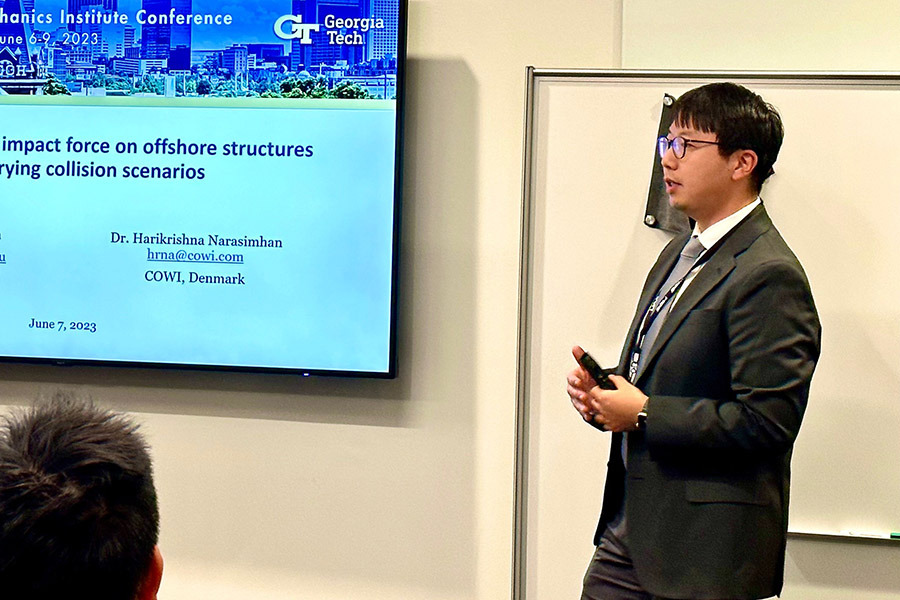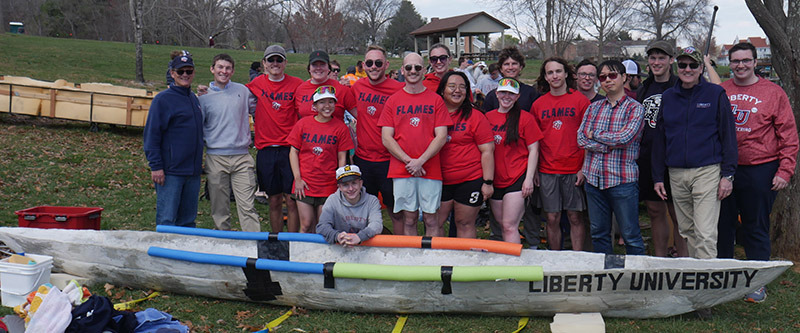Search News Archives
Filter News Articles
Additional Navigation
Civil engineering professor offers insight into Maryland bridge collapse to New York Times
April 4, 2024 : By Ted Allen - Office of Communications & Public Engagement

Hyunjoong Kim, a Liberty University assistant professor of civil engineering who has studied the effects of concrete “dolphins” and other protection systems around bridge piers, was called on to share his expertise for a New York Times story assessing last Tuesday’s early-morning collapse of the Francis Scott Key Bridge, constructed in the mid-1970s near the port of Baltimore.
“If they see much bigger ships are coming back and forth, maybe they need to revisit the risk assessment,” Kim said in the article about one of the costliest maritime disasters in United States history.

He concluded that the installation of such protective structures could have been considered earlier, perhaps not in the design phase but later by utilizing collected statistical data on ship traffic.
“Regular operational risk assessment would facilitate such a decision,” Kim said.
While participating in last Thursday’s through Saturday’s Virginias American Society of Civil Engineers (ASCE) Student Symposium hosted by Virginia Tech in Blacksburg, Va., Kim shared his thoughts about the usefulness of protective structures — such as island buffers and dolphins (cylindrical bumpers made of concrete and steel rebar) — and the necessity of risk assessment in coping with increasing ship sizes and densities.
The “Dali” cargo ship from Singapore that destroyed the Key Bridge was commissioned in 2014 and weighed nearly 100,000 tons without the 1.5 million gallons of diesel fuel and 4,700 containers it was carrying. Other ships can now transport as many as 24,000 containers, five times the cargo load that Dali had at the time of the wreck, posing even greater threats to bridges’ support trusses and superstructure .
“I have conducted risk assessments about ships,” Kim said. “Ships are getting bigger and faster, and it’s never possible to make a perfect prediction from the design phase, so that kind of regular risk assessment could be done every five or ten years. Another option might be making (bridges’) span-lengths bigger and wider so there is less chance of a ship colliding with a pier.”
“Honestly, looking at the pictures and the videos, the ship was very massive, and the bridge was very near to the harbor, so it was surprising to me that that kind of accident had never happened before,” he added. “There are much heavier and more massive bridges like cable suspension bridges and cable-stayed bridges. They have much larger piers so even if a ship collides directly, it may not lead to an entire collapse or as heavy damages.”
From 2019-22, before joining the School of Engineering faculty at Liberty, Dr. Kim served as a specialist in the risk analysis section of COWI, an international consulting group specializing in engineering, environmental science, and economics with headquarters in Denmark.
“They are very good in this kind of bridge collision risk assessment,” Kim said of COWI. “I don’t want to point blame on the bridge design, or even for the ship’s design, for a collision. I would say that they need some sort of risk assessment on a regular basis. All bridges are being monitored and maintained through their lifetime, for example, inspections of fatigue in support (beams and piers), but ship collision risks are not really being assessed regularly.”
Last year, leaning on his knowledge of bridge and structural engineering — he teaches classes in structural analysis, steel structure design, and concrete structure design — Kim served as faculty advisor to the School of Engineering’s Student Steel Bridge Construction (SSBC) competition team.

Last week, with Assistant Professor of Civil Engineering Bryon Ringley serving as its faculty advisor, junior Joel Harkness as captain, and freshman Logan Grasser as project manager, the team qualified for the 2024 SSBC National Finals, hosted by Louisiana Tech University in Ruston, La., from May 31-June 1, with a second-place finish out of eight collegiate teams at the ASCE symposium in Blacksburg.
Liberty’s SSBC team, which was represented by more than half of its 15 members including three builders, finished first in both construction economy and construction speed, second in stiffness, structural efficiency, and cost estimation, and third in lightness and aesthetics. Other competing teams came from JMU, ODU, VMI, Virginia Tech, Marshall, West Virginia, and West Virginia Institute of Technology.
Currently, Dr. Kim is conducting analysis optimization research with junior student research assistant Richard Snyder, the assistant design lead on the SSBC competition team.

“That research focuses on structural damage identification using Artificial Intelligence (AI),” Kim said. “We are developing numerical models for the optimal inspection and maintenance of bridges. While the research may not be directly correlated with ship collision risk assessment, I believe the ultimate goal remains the same — facilitating optimal engineering decisions to enhance safety for civil infrastructure.”
Snyder will be presenting the research at an ASCE-sponsored conference in Chicago from May 28-31.
Additionally, at last week’s symposium, senior Robert Davis, who serves as treasurer of Liberty’s ASCE chapter, placed first out of three entries in the Geotechnical regional competition. Davis used sound engineering judgment and interpretation as well as a 3D model and highly detailed and iterative simulation to most accurately predict the amount of primary settlement that would occur under a recently constructed embankment, factoring in its weight and water erosion underneath it, as well as how long it would take for the ground to finish its primarily consolidation.
“I tried to leverage the technological and computational resources and training the school gave me as part of my education to give me an edge over those relying on the traditional methods taught in most other universities,” Davis said.
School of Engineering Dean Mark Horstemeyer said that he was “extremely proud” of the Civil Engineering faculty — Drs. Kim, who now serves as faculty advisor for the Concrete Canoe competition team, and Ringley — and the students who competed during the symposium at Virginia Tech.
“They illustrate that Liberty University’s School of Engineering is competitive with other engineering schools when the Civil Engineering Department is basically just five years old,” Horstemeyer said, noting that there are approximately 100 residential students in the program and another 800 studying civil engineering through the online curriculum.



